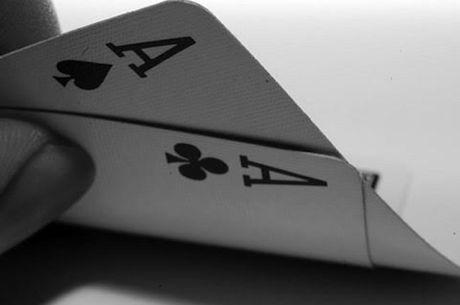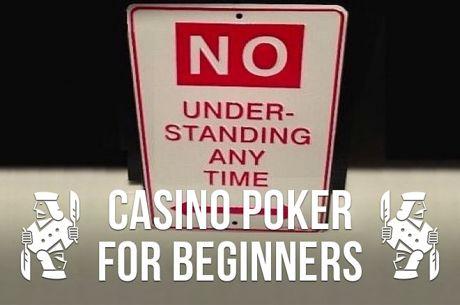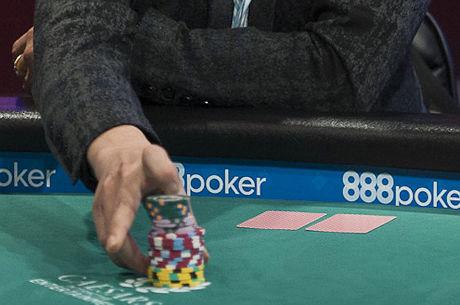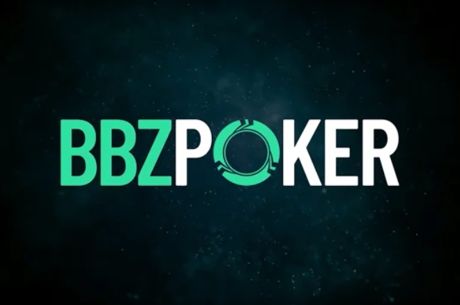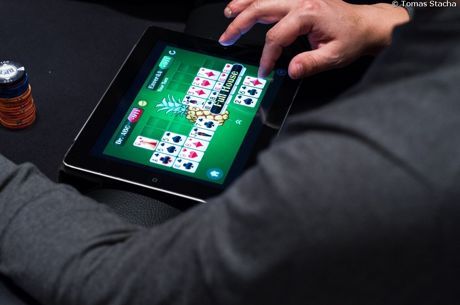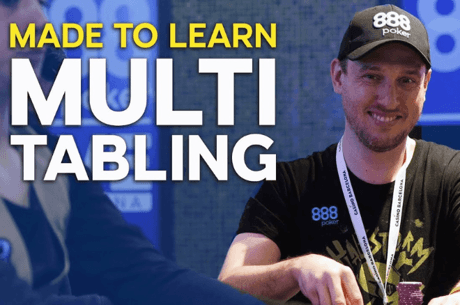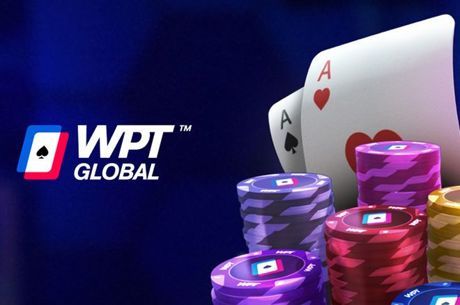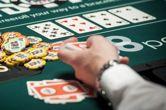Hand Analysis: A Good and Ridiculous Bluff
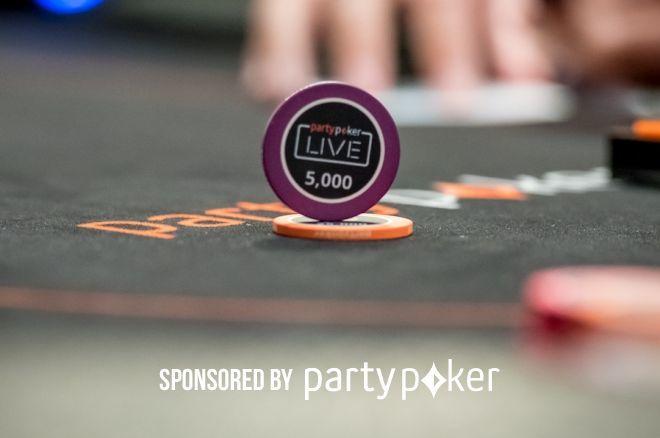
There are many spots these days in six-max no-limit hold'em where online poker players are turning hands far too strong into bluffs.
Most often, players should have played such hands more slowly at an earlier juncture, then from there they get themselves into a "win the pot at all costs mentality" after having forsaken pot control �� or impulse control (it is sometimes hard to distinguish).
Just as a general reminder, you should be making the biggest bluffs with the stone bottom of your range. Therefore, often, when it comes to absolute hand strength, when those bluffs get looked up, they will look potentially ridiculous.
Wow... what a preamble, you say, waiting on the edge of your seat for the example hand that is about to exemplify the concepts discussed above. Wait no more.
Three-Betting Preflop, Then Continuing Small
It started out as just another ordinary hand of 100NL 6-max. ($0.50/$1). They all glide by so casually, each indistinguishable from the next. How then, do players suddenly let loose and lose their mind and with that their money? Who is to say? But this hand began simply enough with the middle position player raising to $3.50 after under the gun folded.
It folded to a loose-aggressive recreational player in the small blind who was on a card rush �� the kind of player you think you want to play against until they are putting you all in �� who put in a three-bet to $9. The action returned to the initial raiser, playing $125, who just called. Rule out aces and kings.
The flop came J?8?4?. The small blind continuation bet $9 �� an interesting size, since one would think most of the small blind's ace-king combinations would give up here, save perhaps three of the 16 that have backdoor flush draws.
In other words, small blind should not be betting that often on this texture, since the player who called the three-bet does not often fold for one bet. When someone has a lower betting frequency, you'll often see a bigger size. But instead he chose $9.
Things Get Interesting
There are some derisive terms sometimes used to describe recreational players going to war. Those terms will not be repeated here.
Suffice to say the turn was the Q? and the small blind decided to bet huge �� the exact pot, which was $35 and change after rake.
This bet seems really strangely advised, since the in-position player is more likely to have hands like QxJx-suited and 10x9x-suited as well as blockers to ten-nine like pocket tens and nines. Indeed, one would imagine from a theory perspective, this bet size is a mistake.
If the small blind has pocket aces, he is about to hate life if any more money goes into the pot. Meanwhile if he has ace-king he is probably not getting quite enough folds as he would like. It's a fine line, and it is not that often that just jamming on the "bet pot" button threads it.
The three-bet caller, the defender, the player on the back of his heels, called this pot-sized wager.
Cue Fireworks
With roughly $105 in the middle the river brought the 10?, making the final board J?8?4?Q?10? with a turned flush draw that didn't come in. Time for a small digression.
There is an argument to be made in favour of over representing ace-king when bluffing, in so many spots, because ace-king is the hand that all players put their opponents on most often, far more often than they should, when facing aggression.
Whether that argument applies here in this spot is hard to say. In small stakes games, we should focus on bluffing weakness, not strength. It is indisputable that the player here calling the preflop three-bet, the small flop bet, and the big turn bet has a strong range. Calling is stronger than betting, and becomes even stronger the bigger the pot gets. And by the time we reach the river in this exact hand, this is a very big pot.
In terms of bluffing candidates, our small blind kamikaze wants to have a hand that blocks A?K?, and therefore ace-king in general, but isn't so strong to have a pair that can win at showdown. Ax9x is a value hand with a straight, and Ax8x should check the flop to call more often than bomb away. Meanwhile, it is hard to think of a KxXx hand that could even justify three-betting preflop and then would not have a piece of this board with all its Broadway cards.
Cards Up
Have you put together where all this is going? On the river the small blind let loose with A?3? for $70, putting his opponent to the test and clearly shouting he was bluffing on the turn for pot with ace-king. I think that the size the small blind bet on the turn is a mistake, because after all, what hand is going to fold for $35 that won't fold for $25? And �� to look at the other side of the coin �� what hand will call $25 but fold for pot? Recall how so many one-pair hands like Jx10x-suited, Qx10x-suited, 10x10x and 9x9x picked up straight draws.
With that being said, A?3? seems an excellent candidate with which the small blind can empty the clip here. It checks three boxes. First, the river is scary, presenting a clear threat to his opponent's range. Second, it blocks his opponent's easiest calling hands. Third, it has absolutely, positively, no hope of winning when the action goes check-check on the river.
The recreational player in position had a tough spot to sort out with a hand as absolutely strong as 10?10?. He of course called in the end. Even so, in this little corner of the internet, the small blind's heroism got recorded by history.
This strategy article by Gareth Chantler for PokerNews is sponsored by partypoker.

